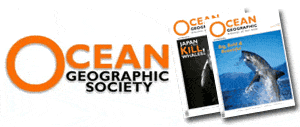
Artificial Shark Womb Makes Progress
Unborn wobbegong sharks are being raised inside an artificial womb as part of a world-first marine conservation experiment in Port Stephens.
Scientists hope the technology can be applied to the critically endangered grey nurse shark, whose young often eat each other inside the womb.
The wobbegong shark embryos have survived their first week inside the sterile tank at the Port Stephens Fisheries Centre, and will be ready to be "born" into a larger tank in two or three weeks.
"So far the pups look quite happy," the project's senior researcher, Dr Nick Otway, said. "They like to huddle up in the corner, but when one starts wriggling, they all start wriggling and swimming around a bit."
If the experiment is successful, grey nurse pups will eventually be raised in the artificial uterus.
Like wobbegongs, which are not a threatened species, grey nurse sharks hatch eggs inside their bodies and keep the pup sharks inside as they grow. Up to seven grey nurse pups are hatched at a time, but usually only the strongest two survive until birth after devouring their siblings.
The cannibalism is making it harder for the species to rebound from near-extinction, and scientists estimate that fewer than 500 grey nurse sharks survive off Australia's east coast. If the experiment succeeds, then eventually pregnant grey nurse sharks will have their embryos removed under anaesthetic, and raised in separate artificial wombs to prevent cannibalism.
Dr Otway said the plan was hatched by the Primary Industries Minister, Ian Macdonald, who was familiar with artificial insemination with cattle and challenged scientists to come up with something similar for endangered fish.
Mr Macdonald said he was looking for innovative ways to increase the grey nurse population, and had committed $400,000 to the artificial womb program.
The Nature Conservation Council of NSW, which is running an "adopt a shark" plan to support the grey nurse, welcomed the research effort but said that more should be done to protect the shark's habitat from commercial and recreational fishing.
From: Sydney Morning Herald
![]() Contributed by Tim Hochgrebe added 2008-09-15
Contributed by Tim Hochgrebe added 2008-09-15
![]() Login or become a member to join in with this discussion.
Login or become a member to join in with this discussion.

 AquaTech Australia
AquaTech Australia
Since 1998 AquaTech has been at the forefront of the design and manufacture of professional photographic accessories.
Articles
-
 What Midlife Crisis?
What Midlife Crisis?
by Ric Mingramm
- When last I corresponded I was venturing into heady world of Dive Mastering. Time, work and the ubiquitous search for a mate has absorbed way too much time to have gained these qualifications to date.






